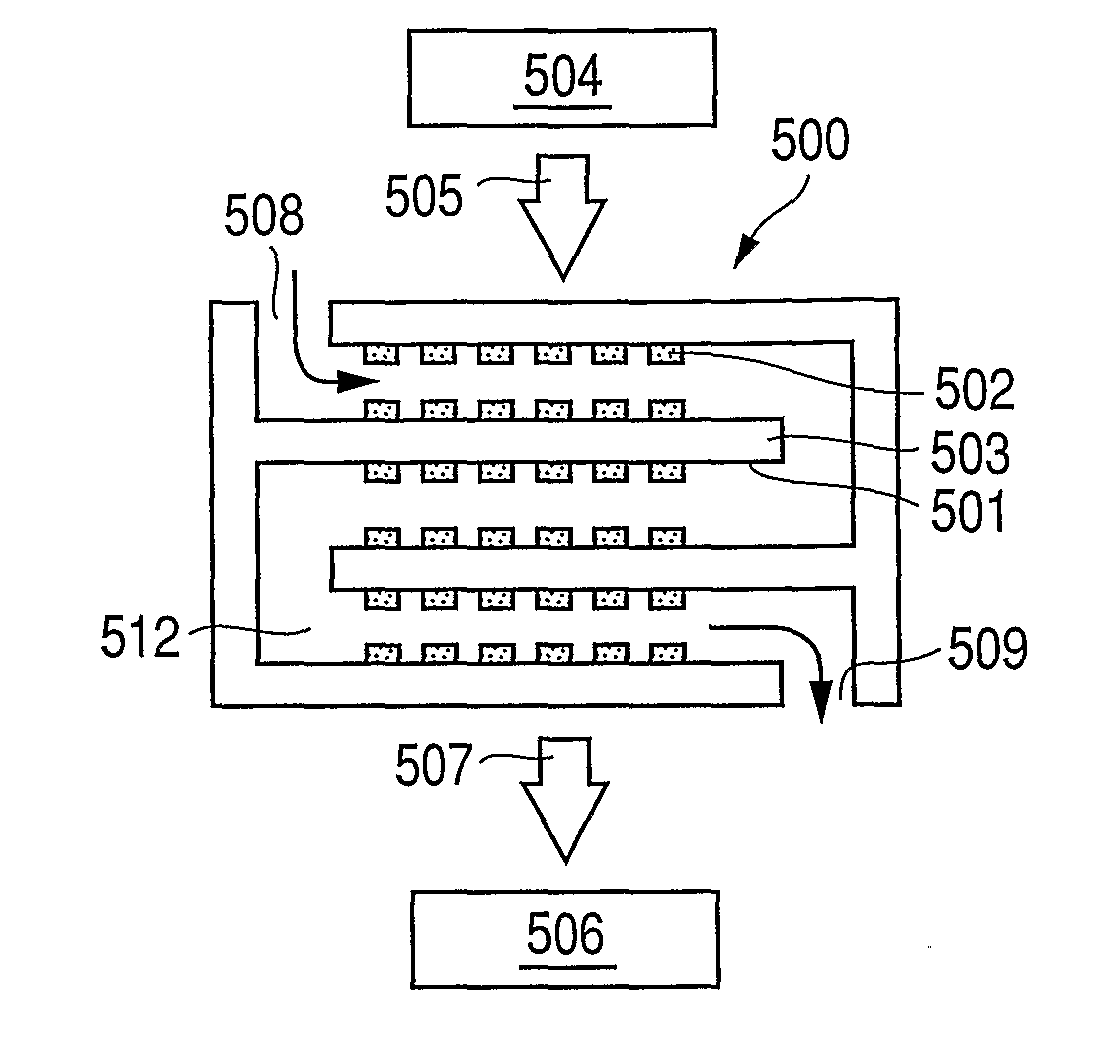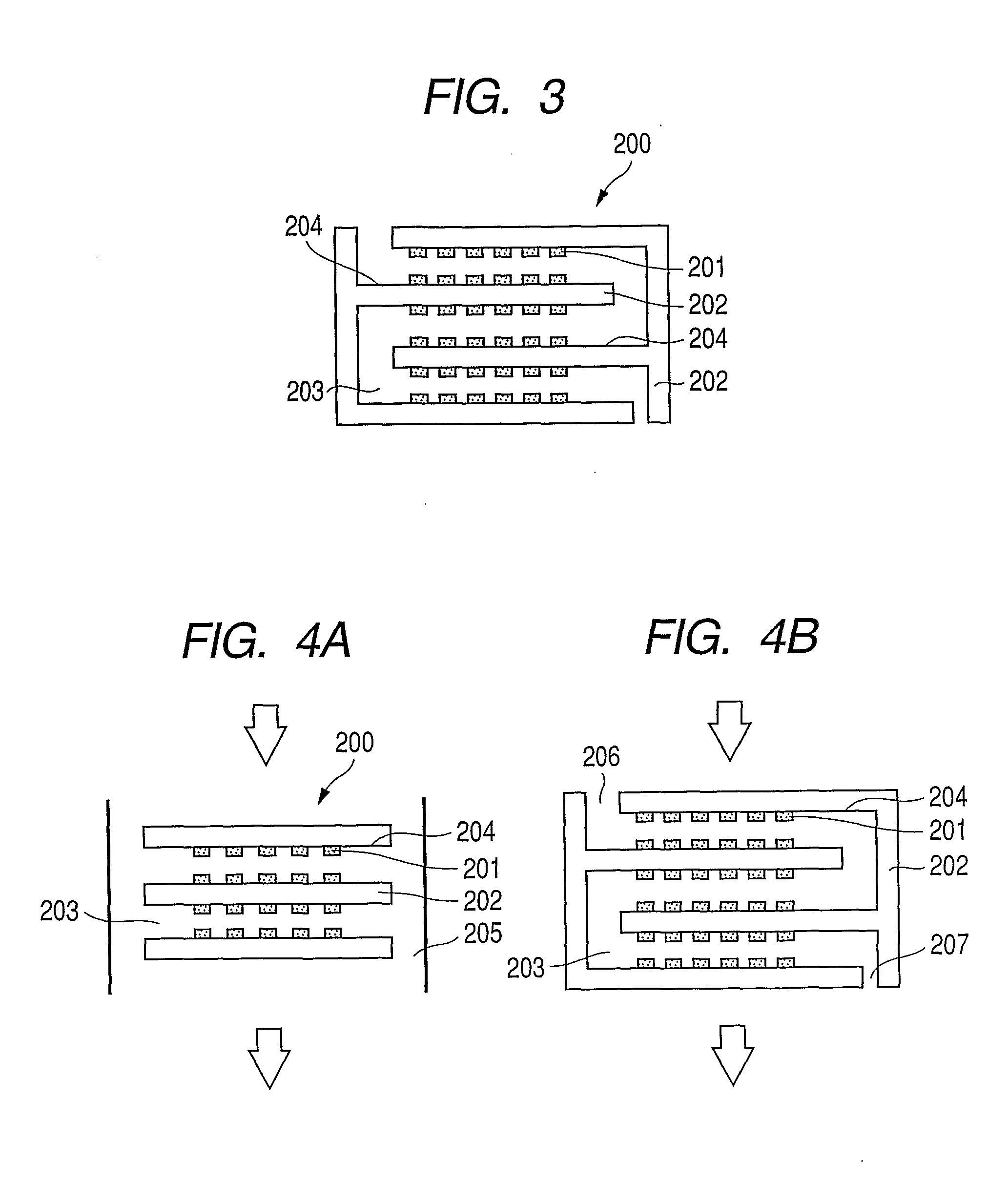Detecting element, detecting device and detecting method
a detection device and element technology, applied in the field of detection elements, can solve the problems of difficult to produce such elements and difficult to measure the characteristics of absorption spectrum, and achieve the effect of high sensitivity and stable detection of target substances
- Summary
- Abstract
- Description
- Claims
- Application Information
AI Technical Summary
Benefits of technology
Problems solved by technology
Method used
Image
Examples
embodiments
Embodiment 1
[0100]Embodiment 1 will be now described with reference to FIGS. 7A, 7B and 8.
[0101]A detecting element is prepared by the steps of: previously forming an adhesive layer of Ti on a quartz substrate with a thickness of 0.725 mm; then forming a gold thin film with a thickness of 20 nm on the surface of the adhesive layer with a sputtering technique; applying a negative resist onto the gold thin film; exposing a square part of 200 nm by 200 nm in the negative resist to light by using an electron-beam lithographic apparatus to form a square resist pattern; etching a part of the gold thin film and the adhesive layer, which is not covered with the resist that functions as a mask, by using an ICP etcher; and after the etching step, removing the resist that has been used as the mask, by using an asher. Through the above steps, a gold pattern as illustrated in FIG. 6B is formed on a substrate, which consists of isolated gold thin films from each other having a square shape of 200...
embodiment 2
[0108]Embodiment 2 will be now described with reference to FIGS. 10 and 11.
[0109]The whole surface of a glass substrate 901 (made by Matsunami Glass Ind., Ltd.) is previously modified with an amino group. Then, the glass substrate 901 is immersed in a solution of a fine gold particle 902 with an average particle diameter of 40 nm (made in Tanaka Kikinzoku Kogyo K. K.) for 24 hours, is washed with pure water, and is dried with nitrogen gas.
[0110]Subsequently, a capturing body for capturing a target substance is immobilized on the surface of a fine gold particle by the following steps of: firstly, adding an ethanol solution of 11-mercaptoundecanoic acid having a thiol group having a high affinity for gold to modify the surface of the fine gold particle; then, making the modified surface contact with an aqueous solution of n-hydroxysulfosuccinimide (made by Dojindo Laboratories Corporation) and the aqueous solution of 1-ethyl-3-[3-dimethylamino]propyl] carbodiimide hydrochloride (made ...
PUM
 Login to View More
Login to View More Abstract
Description
Claims
Application Information
 Login to View More
Login to View More - R&D
- Intellectual Property
- Life Sciences
- Materials
- Tech Scout
- Unparalleled Data Quality
- Higher Quality Content
- 60% Fewer Hallucinations
Browse by: Latest US Patents, China's latest patents, Technical Efficacy Thesaurus, Application Domain, Technology Topic, Popular Technical Reports.
© 2025 PatSnap. All rights reserved.Legal|Privacy policy|Modern Slavery Act Transparency Statement|Sitemap|About US| Contact US: help@patsnap.com



